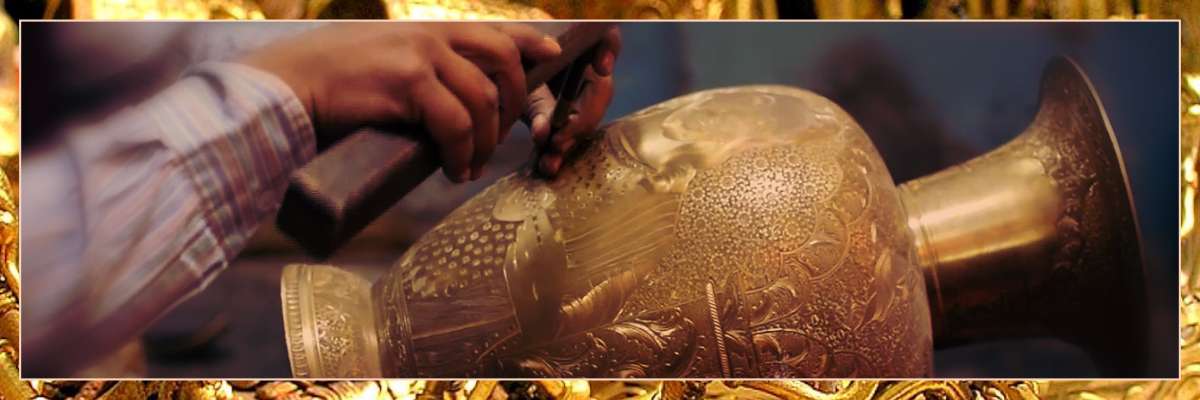Buy Traditional home decor products online in India

Traditional interior design is timeless, placeless, simple, and well-constructed. Traditional interior design is timeless and placeless. The types of furniture, textiles, and color palettes used in traditional rooms are familiar and not trend-setting. A traditional-style bedroom may include a neutral color scheme, a carved wood headboard or upholstered headboard, matching nightstands/table lamps, a chest with drawers, an ottoman, and possibly a landscape painting.
The origins of traditional interior design styles
As postwar suburbs boomed, traditional interior design was popularized in the 20th Century. People sought to imitate interior design traditions from 18th- and 19th century Europe, especially England and France.
While traditional interior design continues to be popular, newer, trendier, and decade-specific designs emerge, it quietly hums in the background. While Mid Century Modern designers took advantage of new production techniques and the post-war boom in housing to produce innovative furniture and household items using new materials, traditionalists were still using these same production methods to make reproductions of Chippendale highboy dresses and Queen Anne. While the traditional design was popular, the postmodern 80s saw influential movements like Memphis design which challenged all conventional ideas of color and form but never challenged.
Many Americans grew up in homes that can be described as traditional. Many people feel at home in traditional homes that are still modern and functional for modern living. A Traditional living area's goal is not to make a statement but to provide a comfortable and elegant backdrop to family life. A traditional room can feel dated, boring, and uninspired at its worst.
Today's Traditional Design
Tradition is not a guarantee that Traditional design will always be relevant. The revival of granny chic has been started by Grandmillennials. Many traditional homes today incorporate modern features such as large kitchen islands or open-plan living spaces. Many designers today are more likely to use bolder colors and add antique and vintage furniture to create a new style, which many refer to as traditional. The transitional style is a mix of contemporary and traditional designs.
The Key Characteristics Of Traditional Interior Design Style
- Decor, furniture, and art that are rooted in European design originate primarily from the 18th to 19th centuries, especially from England and France.
- The design is often influenced by the styles of the past, but with less fine ornamental details.
- The rooms are designed to be practical, comfortable, and family-friendly.
- The focus on symmetry means that space planning is based around traditional uses of space, and pairs of furniture and objects like armchairs and lamps. It also allows for a more harmonious feeling than a room filled with contrast and juxtaposition.
- Interiors can include elements like crown molding or wainscoting.
- Palettes of color include neutrals and sparingly use of bright colors.
- Darker wood finishes are more common in flooring and furniture made of wood.
- While walls are typically painted in neutrals, subtle patterns of wallpaper may be used in traditional motifs like floral, stripes, or damask.
- Most textiles can be subtly or neutrally patterned, just like wallpaper, and may include heavy cotton and wool as well as velvet, fur, and silk.
Traditional Interior Design Decorating Ideas
- The furniture layout is important. Prioritize symmetry, flow, and cohesion to make rooms welcoming and comfortable.
- Select a neutral color palette that favors jewel tones or subdued earth tones.
- You should look for pieces that are harmonious in style and color. But don't buy matching sets or you might end up with a showroom full of junk furniture.
- Reproduction furniture is more common in traditional decor schemes, but don't be afraid to add antiques or contemporary pieces to the overall design.
- Use pattern in soft furnishings and textiles with subtle tones, florals, stripes, and plaids.
- Modernized versions of classic lighting fixtures like pendants or sconces can be installed.
- Vintage rugs or Persian-style reproductions work well in traditional rooms. An overdyed Turkish rug can give the room a little edge.
- For furniture, choose warm and rich wood tones like walnut.
- Window treatments are classic and layered. They include simple curtains and blinds or drapes. However, modern versions of traditional styles tend to forgo the elaborate curtain valances that were so common in past times.
- Traditional accessories like tablecloths and candelabras, a set of china, antique silver, and sets of china should be used, but not in an overly edited or dated way.
- Traditional style should be considered a starting point, not an end goal. You can also mix and match non-traditional elements to create a unique space.















